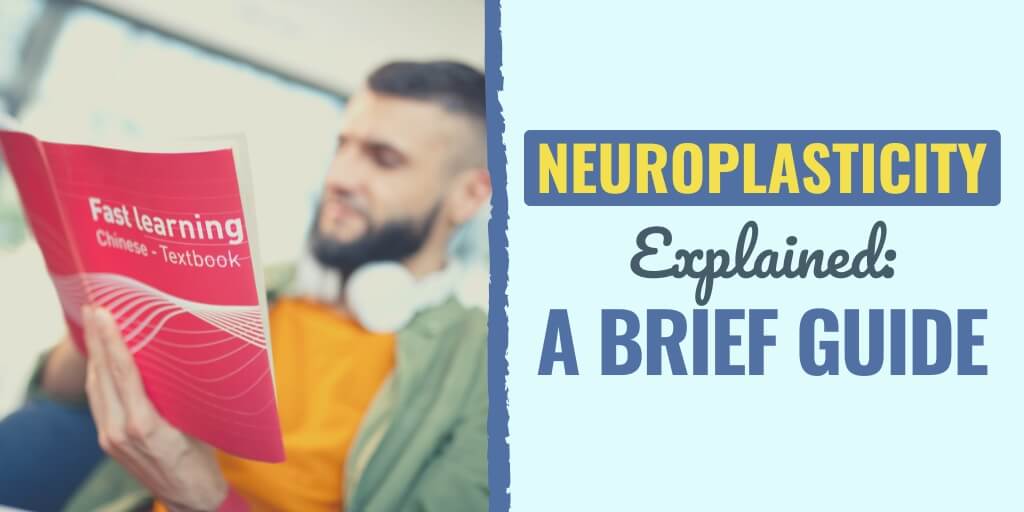There might be affiliate links on this page, which means we get a small commission of anything you buy. As an Amazon Associate we earn from qualifying purchases. Please do your own research before making any online purchase.
Is it possible to change a bad habit? Can you replace limiting behaviors with good habits?
That's what many people claim is possible through neuroplasticity.
So what is neuroplasticity and how can it help you develop good habits?
What is Neuroplasticity?
Put simply, the concept of neuroplasticity is defined as:
Neuroplasticity
nu̇r-ō-pla-ˈsti-sə-tē
The way the brain reorganizes itself by forming new connections throughout life
It's been said that the brain allows adjustment to activities in response to new situations or changes in their environment. Through neuroplasticity your brain can be reorganized through practice and training.
Can Neuroplasticity Help You Develop a Daily Habit?
It’s a common belief that once we reach adulthood, we can’t change the bad habits that we have built over the course of our lives. We are told that nerve cells that are lost don’t come back.
This may be true but that doesn’t stop the brain from changing the way we do things. People can change. The only way you stop changing is if you stop learning and growing.
All of these changes are made possible by reconditioning your brain to think differently. With neuroplasticity, you can reorganize your thoughts to change bad daily habits. You reorganize your thought pattern into what you want your new habit to be like.
Your brain is a powerful tool. It can do almost anything you put your mind to. So if you want to change a daily habit, it will adjust to the new change.
Developing a growth mindset can also help you bring about this change. Learn about 11 actionable strategies that can help in the video below:
Examples of Neuroplasticity
Here are a few examples of how neuroplasticity works:
Example 1
Let's say that you are a musician and used to playing with your fingers. Neuroplasticity makes it possible for you to switch gears and start playing sports using your feet as your foundation.
The ability to change the habit of also using your fingers to now also using your feet is the prime idea of neuroplasticity. You are retraining your brain and using its muscles to acquire a new habit. It may be a tough process but it’s an obtainable one.
Example 2
What if you wanted to learn a new language during adulthood?
It’s often said that it’s difficult past your teenage years to learn a new language because we learn our main language around our parents and teachers.
Let's say your first language is English but you want to learn Spanish. Most people think it's not possible to become fluent in another language when you're older. However, products like Rosetta Stone have figure out how to use neuroplasticity to learn the daily habit of speaking another language.
Overall, neuroplasticity has its pros and cons.
You just have to make use of the pros to your advantage. You don’t have to succumb to the fact that you lose brain cells as you get older to change daily habits for yourself.
Changing habits is hard. But the more you understand how habits are formed and the science behind them, you are well on your way to success to with changing them.
Final Thoughts on Neuroplasticity
Make a dynamic change to your habit development by incorporating small, easily doable habits into your life.
Don't know where to start? Check out the blog posts:


